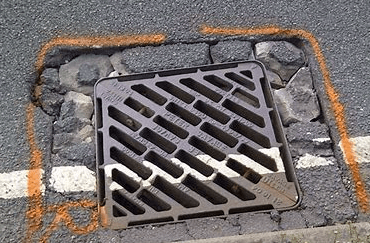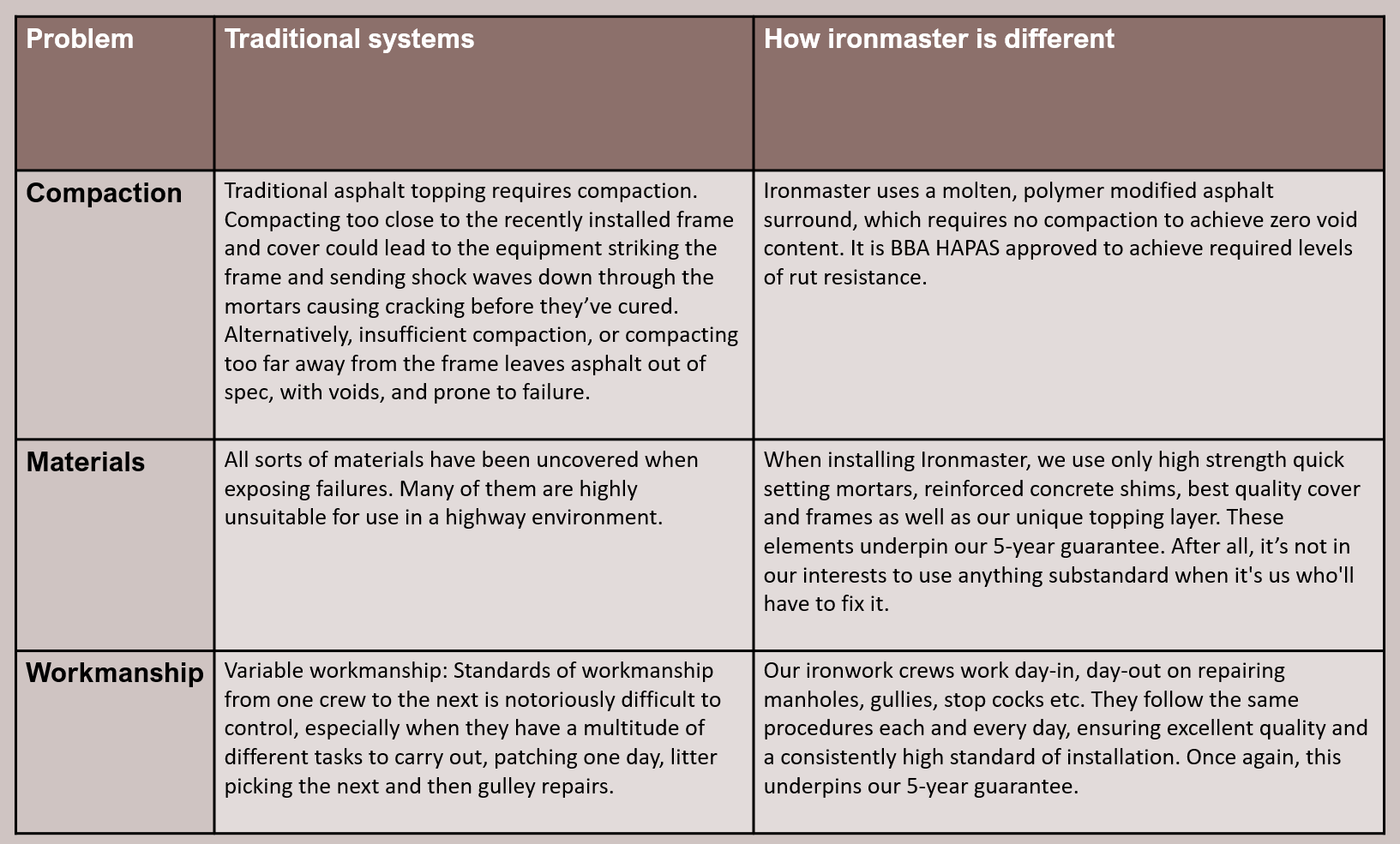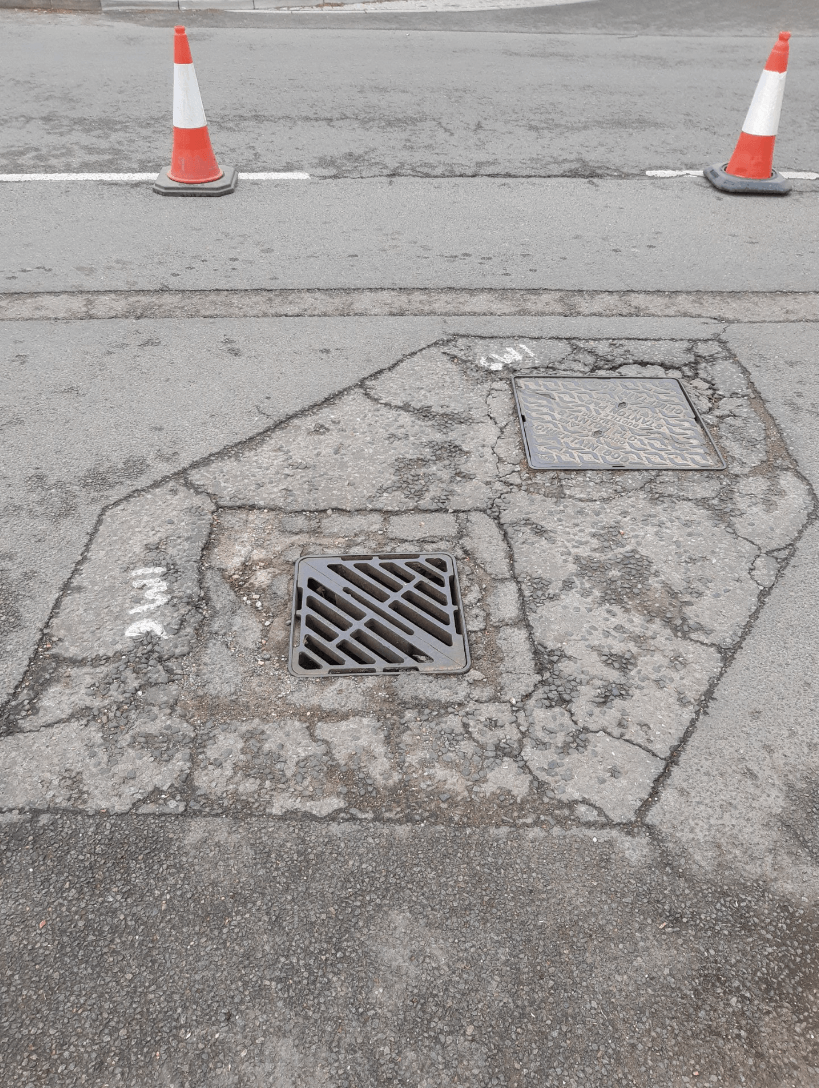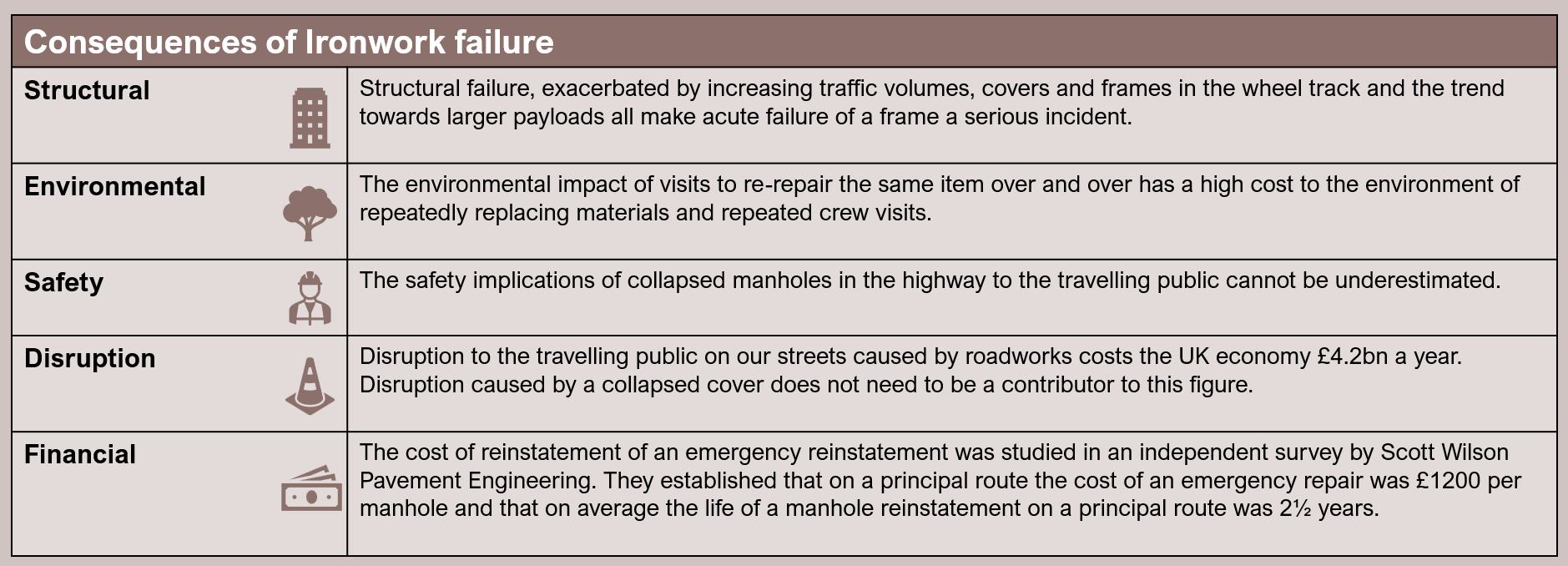Causes of Ironwork Failure
Ironwork failures on the highway network are unfortunately all too common. In a landmark study, Scott Wilson Kirkpatrick found that on principal routes, over 50% of manholes fail within just two years of installation or reinstatement.
So why does this happen?
Extensive research and field evidence have identified three primary failure modes—each of which contributes to premature deterioration, safety risks, and increased maintenance costs.



The Problem with Traditional Repairs
Traditional ironwork reinstatement methods fail repeatedly—leading to escalating costs, safety risks, and legal exposure.
In a study of over 1,500 failed highway ironwork installations, every single case involved multiple points of failure, including:
Bedding mortar breakdown
Poor packing or shimming
Deteriorated brickwork
Cracked or unstable surface surrounds
Damaged or misaligned ironwork
These failures fall into three critical categories:
1) Structural, 2) Financial & 3) Litigation

